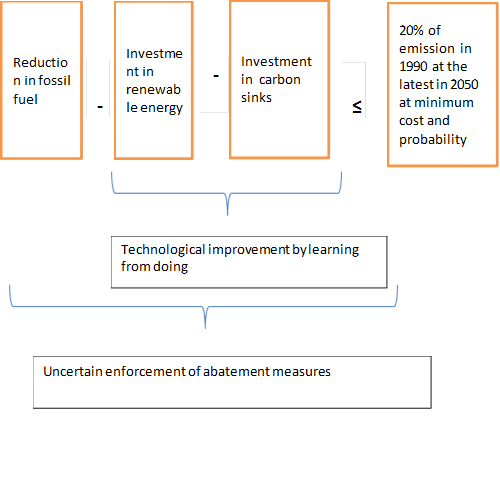Contact
Hans Liljenström, Prof. Dept. of Energy and Technology, SLU hans.liljenstrom@slu.se, +46 (0)18-671728, +46 (0)73-654 7977
The ultimate question posed by the numerical model developed in this study is if and how to achieve an 80% GHG reduction from the 1990 level in 2050 in a cost-effective way.
Cost effectiveness is then defined as the allocation of abatement measures over time and at different locations which reaches predetermined targets in a specific time at minimum costs. We consider three spatial layers; the entire Stockholm-Mälar region, counties, y=1,..,5, and municipalities, m=1,..65,. Two of these, counties and municipalities, constitute jurisdictional regions with some discretion with respect to planning and policy decisions. The municipalities have veto power against decisions and plans by the national state. In this study, we will add the entire Stockholm-Mälar region as a hypothetical decision unit for a cost-effective carbon management.
Three classes of measures can be used for reducing the content of carbon in the atmosphere; reductions of CO2e emissions from fossil fuel, investment in renewable energy, and absorption of carbon by creation of carbon sinks. However, due to implementation leakage abatement from all three classes is obtained only under conditions of uncertainty. We account for technological development in renewables and sinks by learning from doing. The basic structure of the model for each spatial layer can then be presented as in the figure below.

Basic structure of the Stockholm-Mälar Carbon model
Hans Liljenström, Prof. Dept. of Energy and Technology, SLU hans.liljenstrom@slu.se, +46 (0)18-671728, +46 (0)73-654 7977